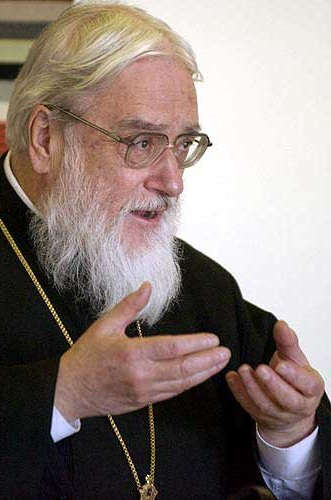Orthodox religious thought lays the utmost emphasis on the image of God in man. Man is a 'living theology', and because he is God's icon, he can find God by looking within his own heart, by 'returning within himself': 'The Kingdom of God is within you' (Luke xvii, 21). 'Know yourselves,' said Saint Antony of Egypt. '...He who knows himself, knows God. (Letter 3). 'If you are pure,' wrote Satin Isaac the Syrian (late seventh century), 'heaven is within you; within yourself you will see the angels and the Lord of the angels' (Quoted in P. Evdokimov, L'Orthodoxie, p 88). And of Saint Pachomius it is recorded: 'In the purity of his heart he saw the invisible nature of God as in a mirror' (First Greek Life, 22).
Because he is an icon of God, each member of the human race, even the most sinful, is infinitely precious in God's sight. 'When you see your brother,' said Clement of Alexandria (died 215), 'you see God' (Stromateis, I xix [94, 5]). And Evagarius taught: 'After God, you must count all men as God Himself' (On Prayer, 123). This respect for every human being is visibly expressed in Orthodox worship, when the priest senses not only the icons but the members of the congregation, saluting the image of God in each person. 'The best icon of God is man' (P. Evodokimov, L'Orthodoxie, 218).
~ Timothy Ware, The Orthodox Church, p 225-226
TALK ABOUT IT: How does this Orthodox teaching affirm or challenge your own thoughts about human beings?
DO IT (INNER PRACTICE): If, as in Orthodox teaching, this divine image (icon) is a potentiality to be made real, how can/do you practice realizing it?
DO IT (OUTER PRACTICE): How can/do you summon this potentiality in others?
LEARNING FROM TIMOTHY WARE: CHURCH OF RECONCILIATION

No comments:
Post a Comment